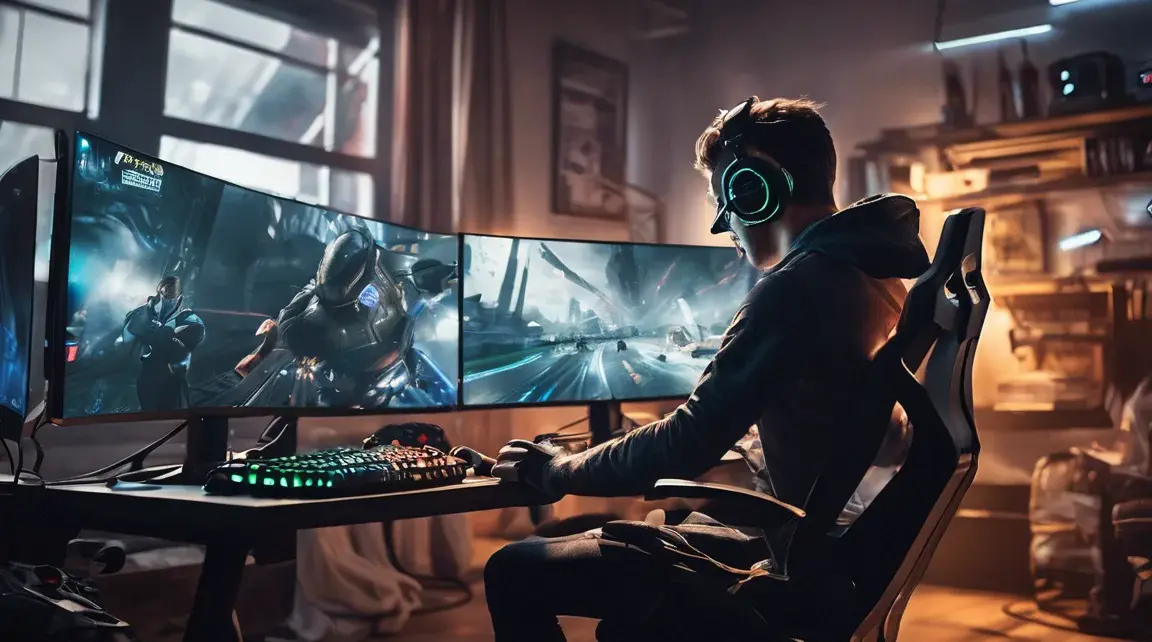Nothing ruins an intense gaming session like sudden lag, choppy graphics, or unexpected crashes. Whether you’re competing in high-stakes matches or exploring vast open worlds, performance settings can make or break your experience. Optimizing these settings ensures smoother gameplay, faster response times, and an overall better gaming experience.
How to Identify Low Game Performance
Before tweaking your settings, recognize the signs of poor performance:
- Frequent Lag or Stuttering – If your game freezes momentarily, it’s likely suffering from low frame rates.
- Graphics Glitches – Blurry textures or flickering visuals may indicate settings are too high for your hardware.
- Slow Load Times – A sluggish startup or scene transition can signal performance issues.
- Crashes or Freezes – If your game shuts down unexpectedly, it might be overloading your system.
Essential Performance Settings for Smooth Gameplay
Adjusting game settings can drastically improve performance. Here are the key settings to tweak:
1. Resolution
Higher resolutions (e.g., 4K) offer stunning visuals but require more GPU power. If your game lags, lowering the resolution (e.g., 1080p) can boost frame rates without compromising too much on quality.
2. Frame Rate (FPS)
A higher frame rate ensures smoother motion. If supported, aim for at least 60-120 FPS in fast-paced games. Enable V-Sync or G-Sync to reduce screen tearing.
3. Texture Quality
Higher textures improve game visuals but demand more VRAM. If you experience performance drops, lowering texture settings can free up memory and improve smoothness.
4. Shadow Quality & View Distance
Shadows and view distances enhance realism but can be performance-heavy. Reducing these settings can significantly stabilize gameplay while maintaining decent visuals.
How to Optimize Performance on Consoles
PC players have more customization options, but console gamers can also optimize performance for a better experience:
1. Use Performance Mode
Modern consoles like the PlayStation 5 and Xbox Series X offer a Performance Mode that prioritizes higher frame rates over graphical fidelity. This is ideal for competitive gaming.
2. Adjust In-Game Graphics Settings
Many console games now include settings for resolution and performance. Lowering shadow quality, motion blur, and post-processing effects can improve smoothness.
3. Manage Storage and System Updates
Ensure your console has enough free storage. Full storage can slow down performance, so deleting unnecessary games and media files helps maintain efficiency.
4. Optimize Internet Connection
For online gaming, a wired Ethernet connection is more stable than Wi-Fi. Also, adjust network settings to prioritize gaming traffic if your router allows it.
5. Keep Your Console Cool
Overheating can cause frame drops and crashes. Place your console in a well-ventilated area and clean dust from vents regularly.
6. Enable Auto-Updates
Consoles receive frequent firmware and game updates that enhance performance. Enable automatic updates to ensure you’re always running the latest patches and optimizations.
7. Rebuild Database (PlayStation) or Clear Cache (Xbox & Switch)
Over time, consoles accumulate system clutter. On PlayStation, rebuilding the database improves speed and responsiveness. On Xbox and Nintendo Switch, clearing the cache can free up memory and enhance performance.
Best SSDs for Faster Load Times
Upgrading to an SSD significantly improves game load times and reduces in-game stuttering. Here are some of the best SSD options for both PC and console players:
Best SSDs for PC
- Samsung 990 PRO – Exceptional read/write speeds and great for high-performance gaming.
- WD Black SN850X – Offers fast speeds and solid reliability for demanding games.
- Crucial P5 Plus – A budget-friendly option with good performance for most gamers.
Best SSDs for PlayStation 5
- Seagate FireCuda 530 (with heatsink) – One of the best SSDs officially recommended for PS5.
- WD Black SN850X (with heatsink) – A high-speed option designed for PS5 compatibility.
- Crucial P5 Plus – A more affordable yet solid choice for PlayStation users.
Best SSDs for Xbox Series X/S
- Seagate Storage Expansion Card – The only official SSD that fully supports Xbox’s Velocity Architecture.
- WD Black C50 Expansion Card – Another solid plug-and-play option for Xbox Series X/S.
Upgrading to any of these SSDs will ensure faster load times, seamless open-world transitions, and overall better performance.
How to Access and Adjust Game Settings
Navigating game settings varies by title, but here are general steps to find and tweak them:
- Go to Main Menu – Look for ‘Options’ or ‘Settings.’
- Find Graphics Settings – Common subcategories include ‘Graphics,’ ‘Video,’ or ‘Performance.’
- Adjust Key Settings – Modify resolution, frame rate, texture quality, and other options.
- Test and Optimize – Apply changes and monitor improvements in gameplay.
For specific games, a quick Google or YouTube search can guide you to the best settings for your system.
Optimizing System Features for Maximum Gaming Performance
In-game settings are just one piece of the puzzle. Enhancing your system’s performance ensures an even smoother gaming experience:
1. Update Graphics Drivers (PC)
Regularly update your GPU drivers (NVIDIA, AMD, or Intel) to benefit from the latest performance optimizations.
2. Close Background Processes
Unnecessary apps running in the background consume CPU and RAM. Use Task Manager (Windows) or Activity Monitor (Mac) to close them.
3. Adjust GPU Settings (PC)
Tools like NVIDIA Control Panel or AMD Radeon Software allow fine-tuning for performance boosts.
4. Optimize Windows or Mac Performance
Enable Game Mode (Windows) or Low Power Mode Off (Mac) to prioritize gaming performance.
5. Disable Unnecessary Overlays
Overlays like Discord, GeForce Experience, or Xbox Game Bar can impact performance. Disable them if you notice slowdowns.
Conclusion
Optimizing your game settings and system performance can transform your gaming experience. Whether you’re on PC or console, small tweaks can lead to smoother gameplay, faster response times, and more immersive gaming. Experiment with settings, monitor changes, and find the perfect balance for your setup! With regular maintenance and fine-tuning, you can keep your gaming experience at peak performance for the long run.




